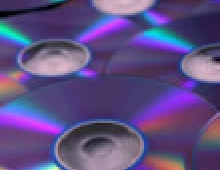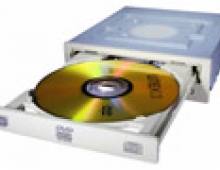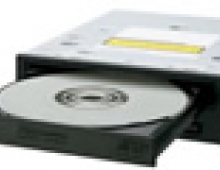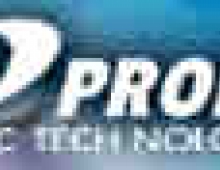Optical Quantum InkJet Printable Media
1. Introduction
 An ever increasing number of users, be it for personal or professional use, produce their own CDs and DVDs. This is evidenced by the increase in duplicators being sold on the market. And while many of you may think that the only people interested in duplicators are those involved in CD and DVD piracy, the truth is very different. The biggest customers of duplicator manufacturers are educational institutions, churches, libraries, clubs, and users like myself, who produce presentation CDs and DVDs for customers.
An ever increasing number of users, be it for personal or professional use, produce their own CDs and DVDs. This is evidenced by the increase in duplicators being sold on the market. And while many of you may think that the only people interested in duplicators are those involved in CD and DVD piracy, the truth is very different. The biggest customers of duplicator manufacturers are educational institutions, churches, libraries, clubs, and users like myself, who produce presentation CDs and DVDs for customers.
One of the nice touches has always been the ability to print the CD label. Originally, to do this, you had to print your image on stick-on CD labels, available 2 on an A4 sheet. The results were quite good, but if you had a lot of discs to do, it was a real headache (and took time) having to stick the labels onto the discs once they were printed. Then along came the printable CD and DVD disc. You could now print directly onto the disc, saving time and the tortuous task of sticking on hundreds of labels. The drawbacks were that you had to have a printer that was capable of printing on CDs (this isn't so bad, there are plenty available now) and the disc's printed surface couldn't come in contact with anything liquid. The second was the more serious problem. The ink would simply smudge, run, and generally ruin the appearance of the disc.
Now, it is very rare that a disc will come in contact with any liquids, or at least it's never happened to me. But then, I'm careful with my discs. Accidents do happen however, and it is a shame to spoil a disc (or its appearance in any case). One alternative until recently, was the Lightscribe technology which burns an image on the label side of a disc in the same way that it burns the disc contents. The problem with Lightscribe is that it simply takes too long. Even for a one off job, I am not that patient, for what in the end is a "grayscale" image.
Recently, a number of "water-proof" discs have appeared on the market. At first, I was very skeptical. I had already seen what even a small amount of water could do to ordinary printable discs and while I believed these new discs were probably a great improvement, I didn't think they could totally solve the problem. So when Octave Systems sent us samples of their printable discs, I was very keen to put them to the test.
Octave Systems (http://www.octave.com) is a good place to find just about anything you need if you're going to be producing your own CDs and DVDs. They have a comprehensive web site and a very good online store. They sell quality, top-rated CD/DVD recorders, CD DVD duplicators, recording software, CD-R, DVD media and CD/DVD writing accessories.
Octave sent us five different types from their Optical Quantum BP range of disks to trial:
- 52X CD-R White Inkjet Printable
- 52X CD-R Silver In jet Printable
- 8X DVD-R White Inkjet Printable
- 8X DVD-R Silver Inkjet Printable
- 16X DVD-R White Inkjet Printable
To print on the CD and DVD disc surfaces, I used my Canon PIXMA iP3000 and CD-LabelPrint, a program that comes with the printer for printing labels. The results below:
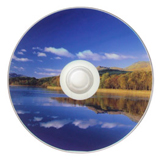 White Inkjet Printable | 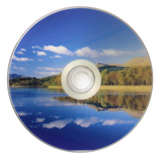 Silver Inkjet Printable |
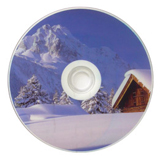 White Inkjet Printable |
The print quality is very good. I've printed 3 discs as you can see above. The difference between the White and Silver Inkjet printable discs is that the picture with the Silver disc is softer and lighter. Anyone who has used printable media before and has used both White and Silver will already know this. The third disc above is one which has primarily white in its picture, and again the final result is very good.
But the real test, and the purpose of this review, is to see how the discs fair when they come into contact with liquids.


